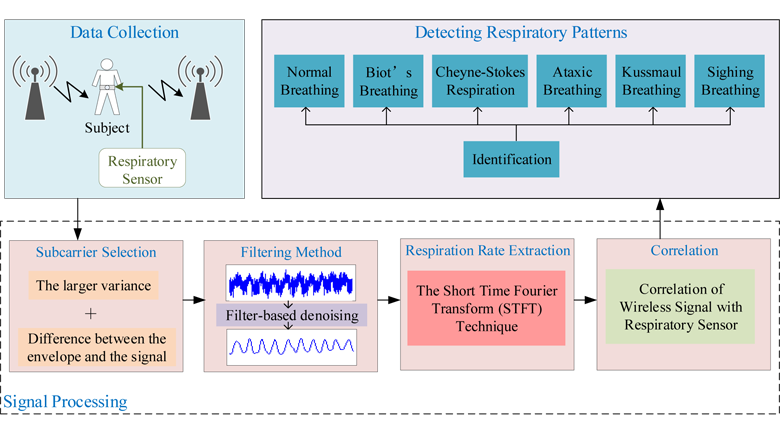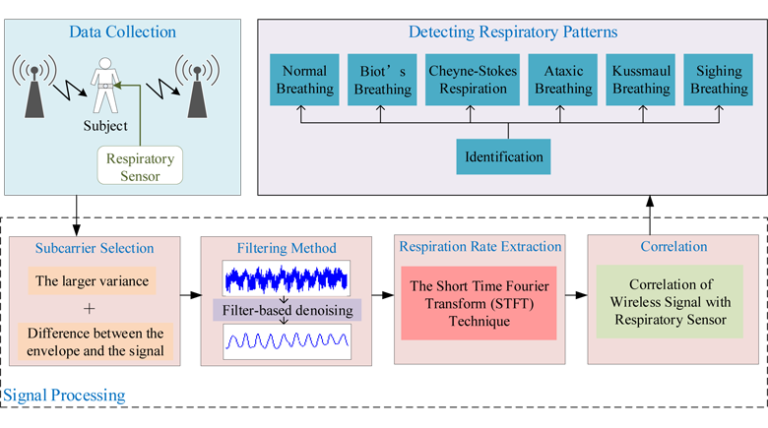Early Access Note:
Early Access articles are new content made available in advance of the final electronic or print versions and result from IEEE’s Preprint or Rapid Post processes. Preprint articles are peer-reviewed but not fully edited. Rapid Post articles are peer-reviewed and edited but not paginated. Both these types of Early Access articles are fully citable from the moment they appear in IEEE Xplore.

Objective: Non-invasive respiration detection methods are of great value to healthcare applications and disease diagnosis with their advantages of minimizing the patient’s physical burden and lessen the requirement of active cooperation of the subject. This method avoids extra preparations, reduces environmental constraints, and strengthens the possibility of real-time respiratory detection. Furthermore, identifying abnormal breathing patterns in real-time is necessary for the diagnosis and monitoring of possible respiratory disorders. Method: A non-invasive method for detecting multiple breathing patterns using C-band sensing technique is presented, which is used for identifying different breathing patterns in addition to extract respiratory rate. We first evaluate the feasibility of this non-contact method in measuring different breathing patterns. Then, we detect several abnormal breathing patterns associated with certain respiratory disorders at real time using C-band sensing technique in indoor environment. Results: Mean square error (MSE) and correlation coefficient (CC) are used to evaluate the correlation between C-band sensing technique and contact respiratory sensor. The results show that all the MSE are less than 0.6 and all CC are more than 0.8, yielding a significant correlation between the two used for detecting each breathing pattern. Clinical Impact: C-band sensing technique is not only used to determine respiratory rates but also to identify breathing patterns, regarding as a preferred noncontact alternative approach to the traditional contact sensing methods. C-band sensing technique also provides a basis for the non-invasive detection of certain respiratory disorders.

